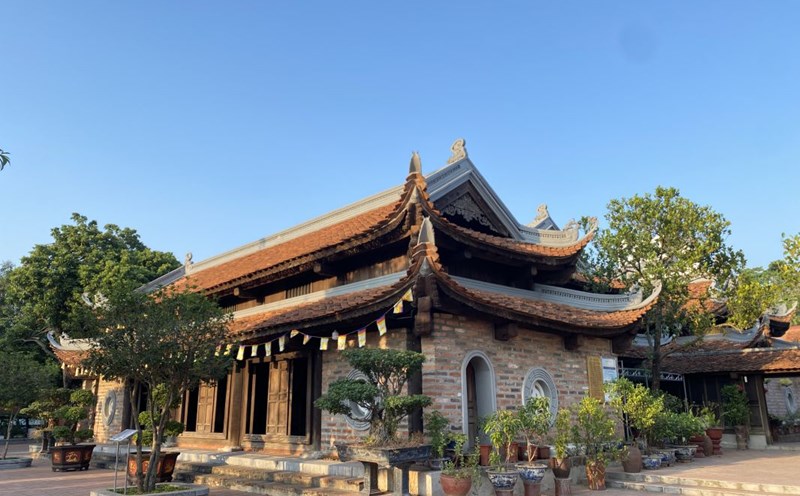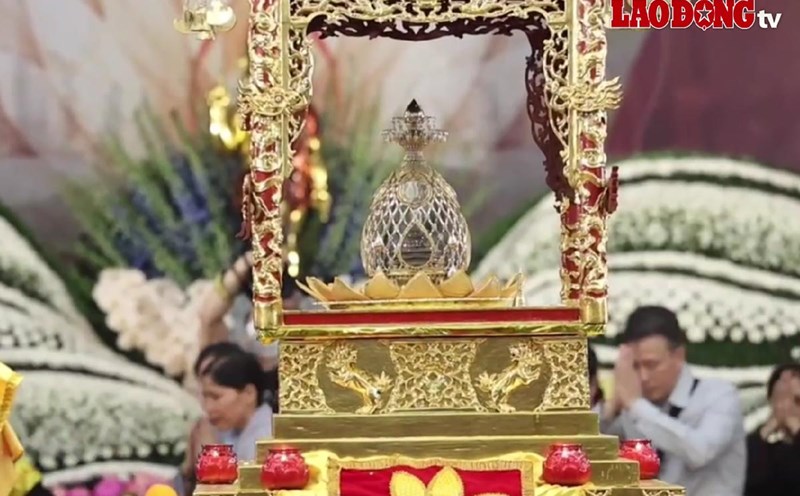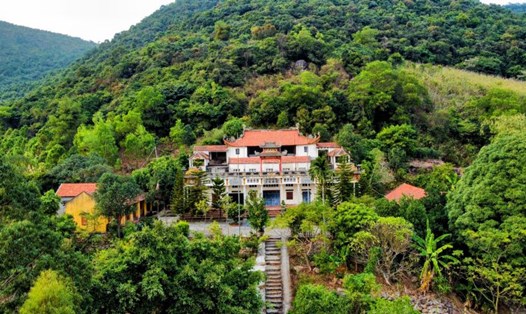The ancient capital of the land of famous land
Dau Pagoda is officially called Phap Vu Tu or Thanh Dao Tu, this place is associated with many different stories and legends, so the pagoda is also called Pagoda of the Kings and Pagoda of the Ba. Dau Pagoda was built on a high, wide mound today in Gia Phuc village, Nguyen Trai commune, Thuong Tin district, Hanoi city.
According to documents recorded in the bronze ancient book, preserved at the pagoda, there is the content: Once Quach Thong was on his way to Gia Phuc village, when he saw the land here like a blooming lotus flower. Hearing that there was a pure wind flowing here that year, Quach Thong submitted it to Sy Nhiep. Sy Nhiep believes that this is the land of the Buddha, and built a pagoda for local people to worship.
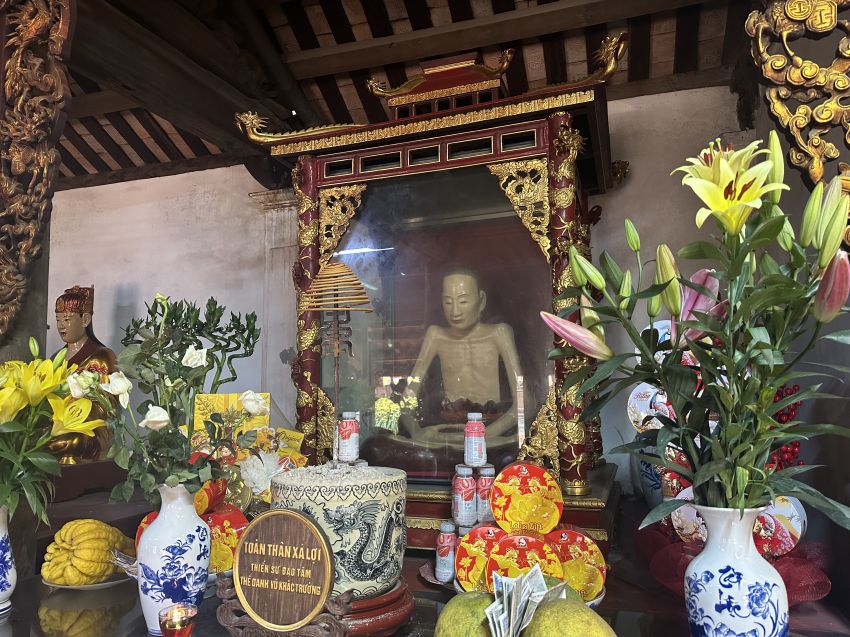
Dau Pagoda was built in the early 3rd century AD and was named Thanh Dao Tu. Along with the construction of the pagoda, it is the time to pass on the relics of Mother Man Nuong and the system of worshiping the Four French. Then, under the orders of the monk, St. Bo Tat Phap Vu was led to worship at the pagoda, from here Thanh Dao Tu was renamed Phap Vu Tu.
During the feudal dynasties, kings often attended the Phat Phaphap ceremony, and people could only attend the ceremony during festivals, from which the pagoda was also called the King's pagoda. The name of the pagoda is also because the pagoda worships the person of the female Emperor Ba Tat Phap Vu. Not only can the king, officials and local people come to the pagoda to worship and pray as desired, the pagoda is also a place where monks and priests come to pray for the famous city's merits and pray for the season of the festival to be considered for the doctorate, from which the people named it Dau pagoda.
A place to preserve historical architectural values
According to the restoration stele erected in the 5th year of Duong Hoa under the reign of King Le Than Tong, the pagoda was greatly restored and embellished under the Ly Dynasty (11th century). After many historical ups and downs, under the reign of King Le Than Tong (17th century), the pagoda was heavily degraded and restored, more spacious and majestic. The pagoda was later granted the title of "An Nam De Tu Phinh Nam" by the king, which means "Danh Lam Nhat Nam Nam".
Located on the land of the feudal system, like a blooming lotus flower, the pagoda now has the typical architectural style of the Northern pagoda. The pagoda still preserves many architectural traces from the Tran, Le, Nguyen periods... The current Dau pagoda includes many different architectural items, the main architectural part of the pagoda is built in the style of "Foreign Industry" with traditional architectural style.

From the outside, there is the Tam Quan gate, built in the "Two floors, eight roofs" direction, below is the gate, above is the bell tower. Passing through Tam Quan is a large yard, leading to the front hall with 5 compartments and 2 wings. Towards the front hall, there are 3 paths, of which at the main entrance, there are still two steps carved with dragon carvings dating from the Tran Dynasty (13th - 14th centuries).
Attached to the front hall are two rows of houses Ta vu and Huu vu, together the row of the Ancestor's house forming the shape of the letter "Khau", inside are the three towers of the Tam Bao building. Located in the middle is Tam Bao building built in the shape of the letter "Cong".
In the main hall of Tam Bao building, there is a place to worship Buddha and worship Great Saint Bo Tat Phap Vu in the style of "Buddha, Son of the Saint". In the Forbidden and Ta Vu, Huu Vu buildings, the French and Chinese families are worshiped... In the Ancestors' house, there is a place to worship the Ancestors who practiced and contributed to building the Dau pagoda as it is today. In addition to the main architectural area of the pagoda, there are many other architectural works such as: Mother House, Tu An House, Quan The Am Bo Tat Temple...
Sacred treasure
In the history of Vietnamese Buddhism, there have been 4 monks. In which, Dau Pagoda still preserves the two remains of Zen master Vu Khac Minh and Zen master Vu Khac Truong, two pillars of Dau Pagoda in the 17th century. Subdism is also known as the whole body of goodness, when the two monks were in a meditation session, they still maintained their figure.
The world scientific community affirms that to marinate the body, all conditions must be met: Use marinating drugs, remove organs, remove minds and the body must be left in an empty, airy environment. On May 25, 1983, Associate Professor, Dr. Nguyen Lan Cuong took an X-ray and studied the body of Zen master Vu Khac Minh.
After studying, scientists have proven that: Thuc than weighs 7kg, there are no Thuc ac ac, no phenomena of intestinal suction, mind suction and bone joints stuck together naturally in the body. Because of this strange thing, scientists have not yet been able to explain why the two Zen master's body humiliation was not harmful when not using any bodyguard.
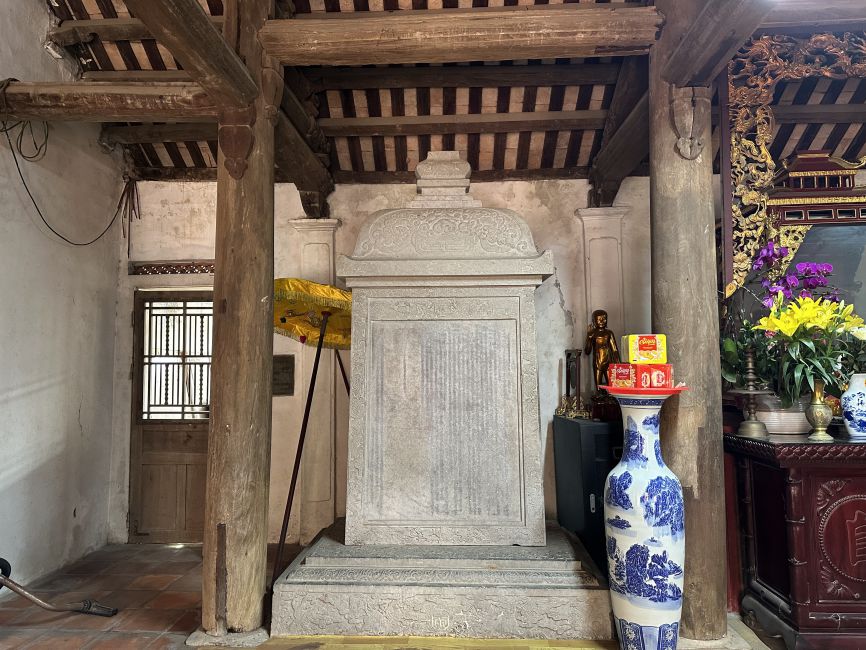
The pagoda also preserves many valuable artifacts such as bronze bells that have been carved with years, bronze bells dating from the Canh Hung period (king Le Hien Tong - 18th century), 7 stone steles, many wooden architectural carvings with patterns on the pair of Becauses, beams, roof robes, against the back of the forehead... in addition, there are many stone pillars dating from the Le Trung Hung and Nguyen periods. In particular, the bronze book recognized as a National Record is the bronze pagoda history book with the most pages and the oldest in Vietnam.
With the long history of the pagoda, the Dau Pagoda festival often attracts many visitors from all over to participate. The festival is held from the 8th to the 10th of the first lunar month. Coming to the traditional festival of Dau Pagoda, visitors can not only enjoy the "flavors" of Vietnamese rural festivals but also experience the beauty of the thousand-year-old cultural identity. Only about 25km south of the center of Hanoi, Dau Pagoda is a destination for religious activities and a top choice for tourists who are followers of history and traditional culture.
As one of the pagodas with the oldest history in Vietnam, it still preserves valuable relics, especially the two famous monks of the 17th century. Known as the "First Famous" with ancient architecture built in traditional style, Dau Pagoda was recognized as a Historical and Cultural Relic under Decision No. 29VH/QD dated January 13, 19644.

